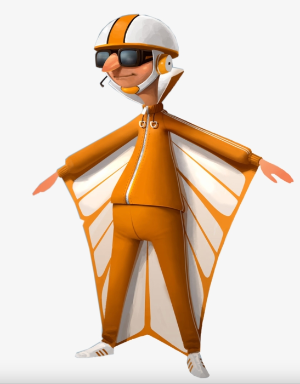3D Vectors (addition, subtraction, multiplication by scalar, unit vectors and magnitude)
Keywords
Vector Addition,Vector Subtraction,Scalar Multiplication,3D Space,Magnitude of Vector,Unit Vector,Direction of Vector

| Factual Questions | Conceptual Questions | Debatable Questions |
| How are vector addition and subtraction visually represented in a 3D space within the applet? | In what ways do the operations of vector addition, subtraction, and scalar multiplication relate to the concepts of force and motion in physics? | To what degree can understanding vector operations improve problem-solving in real-world scenarios such as navigation, engineering, and computer graphics? |
| What formula is used by the applet to calculate the magnitude of a vector? | How do the unit vector and magnitude of a vector provide information about the direction and strength of something like a physical force or velocity? | Can the abstraction of physical phenomena into vectors oversimplify complex interactions, such as those in environmental systems or human-engineered networks? |
| How is scalar multiplication of a vector demonstrated in the applet, and what effects does it have on the vector's magnitude and direction? | What role do the concepts of magnitude and direction play in the application of vectors to GPS navigation systems? | How critical is the understanding of vector operations for advancements in technology, such as autonomous vehicles or virtual reality simulations? |
The Vector Voyage
Scenario: The Vector Voyage
Background:
The Vector Voyage is a new interactive exhibit at the local science museum, designed to introduce visitors to the fascinating world of 3D vectors through an engaging applet.
Objective:
As the exhibit curator, your mission is to guide the visitors on an exploratory journey into the realm of vector addition, subtraction, and scalar multiplication using the applet.
Investigation Steps:
1. Vector Construction:
- Begin by creating vectors in the applet and adjusting their components.
- Illustrate how the vectors are represented in the 3D space and discuss the significance of each axis.
2. Vector Operations:
- Demonstrate the addition of vectors A and B and show the resultant vector.
- Subsequently, explore the subtraction of vectors and scalar multiplication, highlighting the changes in magnitude and direction.
3. Magnitude and Direction:
- Use the applet to calculate the magnitude of the vectors and discuss the concept of the unit vector.
- Challenge visitors to predict the result of operations before using the applet.
4. Real-World Applications:
- Discuss practical applications of vector operations, such as in physics for force and velocity or in computer graphics for rendering scenes.
Questions for Investigation:
1. Discovery Question:
- If vector A represents wind velocity and vector B represents water current, what does their sum represent for a boat's navigation?
2. Exploration Challenge:
- Can the visitors find a combination of vectors that results in a zero vector or a specific directional vector?
3. Conceptual Understanding:
- How does the concept of vectors apply to GPS navigation systems?
4. Reflection:
- Reflect on the importance of vector operations in various scientific and technological fields.
